Bicycles: Powering Possibilities
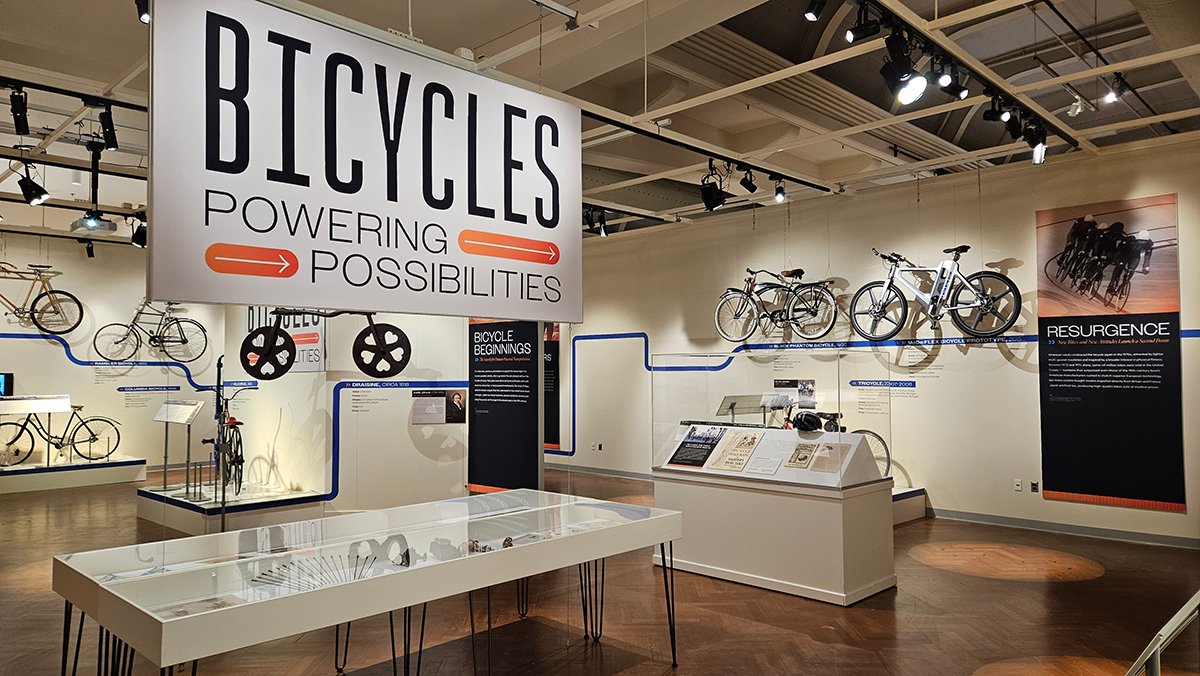
Bicycles take center stage in The Henry Ford’s newest Collections Gallery exhibit. / Photo by Matt Anderson
The Henry Ford is well known for its transportation collections, including automobiles from the road and race track, innovative early aircraft, and railroad locomotives of staggering size. But our holdings also include an impressive number of two-wheeled vehicles. Several of them are featured in our newest exhibit, Bicycles: Powering Possibilities, located in Henry Ford Museum of American Innovation’s Collections Gallery (on view May 3, 2025 - February 15, 2026).

Bicycles gave many children a sense of independence, whether riding with friends or earning money on a paper route. / THF201333
There’s something almost magical about bicycles, powered by our own effort and ambition. For children, bikes provide an early taste of freedom and independence. For adults, they offer a green alternative for daily commuting, or a recreational escape along paved paths or off-road trails. It was the bicycle that introduced Americans to the power of personal transportation. Cyclists were the first group to lobby for better roads, and 19th-century bicycle technology and manufacturing techniques influenced two of the 20th century’s defining machines: the automobile and the airplane.
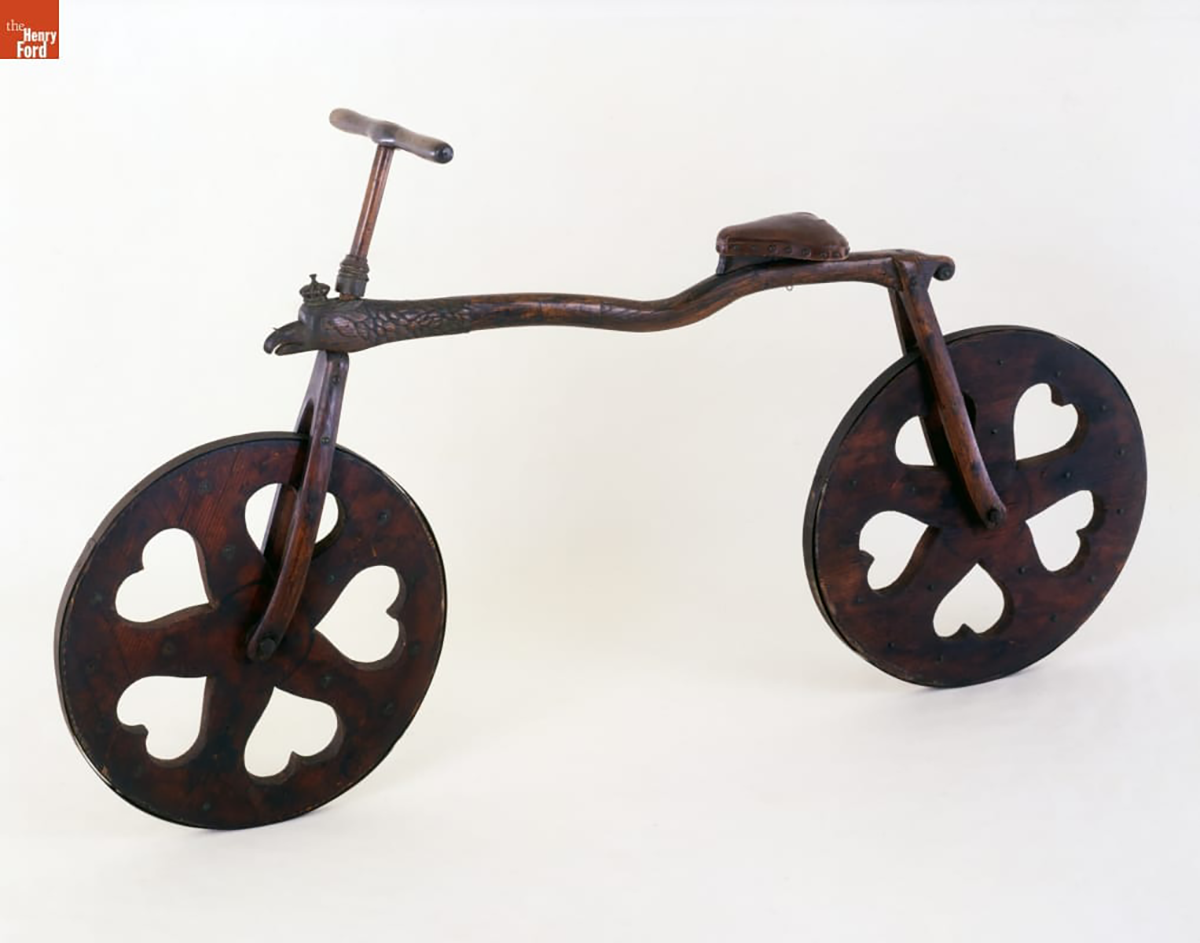
This simple Draisine, built about 1818, is an ancestor to the modern bicycle. / THF108100
Bicycles: Powering Possibilities tells the story through 17 significant machines. The oldest and most basic is our circa 1818 Draisine. It’s as simple as can be. Riders simply scooted their feet along the ground to make the vehicle go. Critics at the time said it was nothing more than a “good way to wear out shoes,” but the little Draisine effectively doubled a pedestrian’s pace. More influential, and more recognizable to modern cyclists, is our 1866 Sargent & Company Velocipede. French blacksmith Pierre Michaux is credited with adding foot pedals to the front axle, giving riders the means to move without their feet touching the ground.
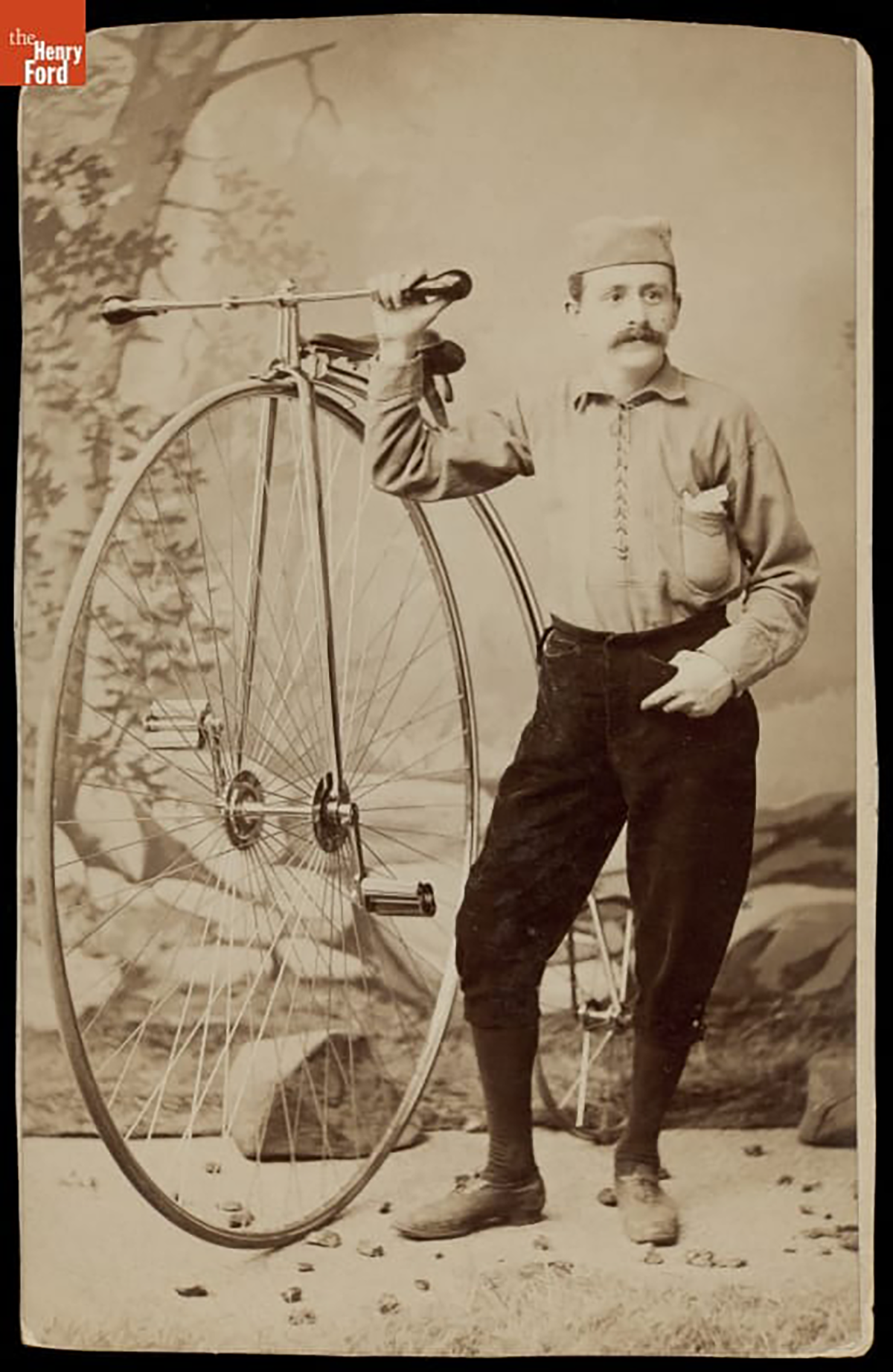
Big wheels increased a bicyclist’s speed and power, but they intimidated new riders. / THF203364
British racer James Moore turned heads in 1870 riding a bicycle with an oversized front wheel. That big wheel allowed Moore to move faster and farther with each turn of the pedals, and the seat’s location above the wheel increased his leverage when pumping his legs. By the end of the decade, high-wheel bikes like our circa 1878 Singer & Company machine were everywhere. But riding a high wheeler required an extra dose of athleticism. Just getting on or off was a challenge, and even experienced riders dreaded tumbling over the handlebars in a “header” accident.
British manufacturer Rover took the next step in the bicycle’s evolution with a new design in 1885. Rover’s “safety bicycle” featured two modestly sized wheels propelled by a chain-and-sprocket drive. The smaller wheels made it easier to climb into the saddle, and the sprockets provided the same mechanical advantage as direct-drive high wheelers. Safety bikes like The Henry Ford’s 1892 Rambler made biking more accessible and ignited a bicycle boom that, by the mid-1890s, saw more than a million new bikes built in the United States each year. At the same time, bicycle competitions grew in popularity both here and abroad. Racers used advanced, lightweight machines like the 1898 Tribune “Blue Streak” to break records and best opponents on tracks, trails, and roads.
All fads run their course, and the 1890s bicycle boom was no different. The turn of the 20th century saw the market flooded with poorly built budget bikes that turned off riders. At the same time, automobiles and motorcycles eclipsed the bicycle’s technical novelty. By 1902, American bicycle production was only a fraction of what it had been a few years earlier.
Adults may have abandoned the bicycle, but children kept riding. Savvy manufacturers shifted toward the youth market, producing children’s bicycles based on adult motorcycles, with flashy colors and stylish accessories that appealed to young riders. Schwinn had baby boomers dreaming about its top-of-the-line Phantom series, while Schwinn and Huffy both later lured the boomers’ Gen X and millennial kids with entry-level BMX bikes.
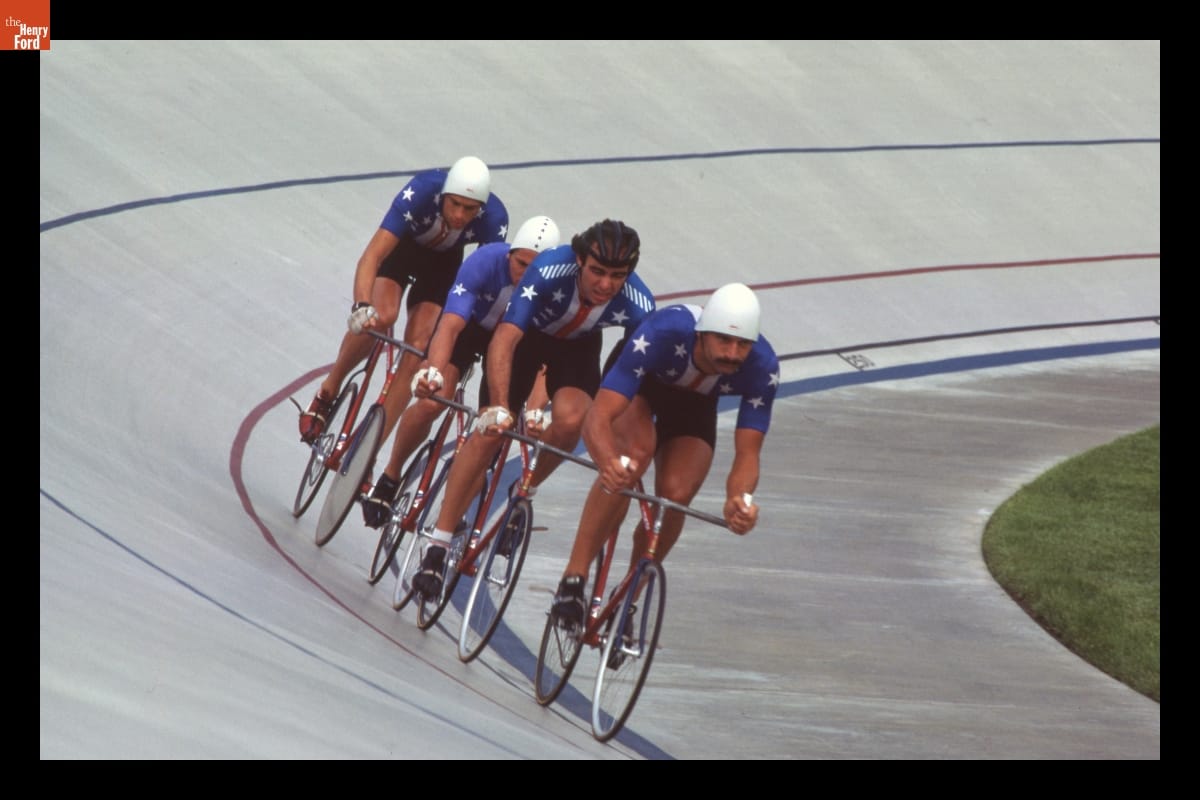
American cyclists won nine medals at the 1984 Summer Olympics, inspiring a new generation of riders / THF720378
In the early 1970s, lighter multi-speed machines lured American adults back into the saddle. Ten-speed bikes like the 1970 Schwinn Continental were well suited to road riding in a variety of conditions. Within 20 years, bikes with 18, 21 or even 25 speeds were widely available. Today bicycling is as popular as ever in the U.S., and new riders continue to take up the sport thanks to promotional efforts, safety campaigns, and the spread of urban bike lanes and rural recreational trails.
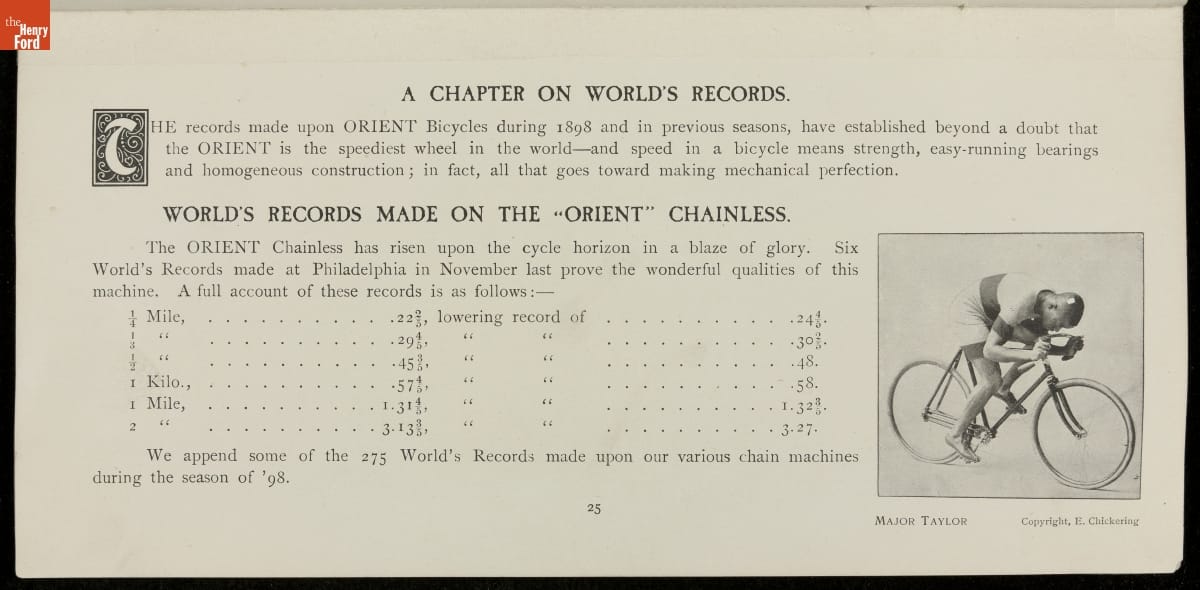
Bike racer Major Taylor broke records and endorsed manufacturers like Orient. / THF207504
Visitors to Bicycles: Powering Possibilities will meet several influential builders, riders, and racers. Albert A. Pope applied early mass-production techniques to bicycle manufacturing at his state-of-the-art factory in Connecticut. Major Taylor wowed audiences in the U.S., Europe and Australia with his speed sprints and, as a Black American, did so in the face of ugly discrimination. Tillie Anderson was praised as one of the best riders of her day and is said to have won all but seven of the 130 competitions she entered. Frank Schwinn and Horace “Huffy” Huffman revived their respective family businesses by building some of the 20th century’s most popular bicycles. Of course, we can’t forget the Wright brothers, whose 1890s bicycle shop gave them the resources to build and fly the world’s first successful airplane.
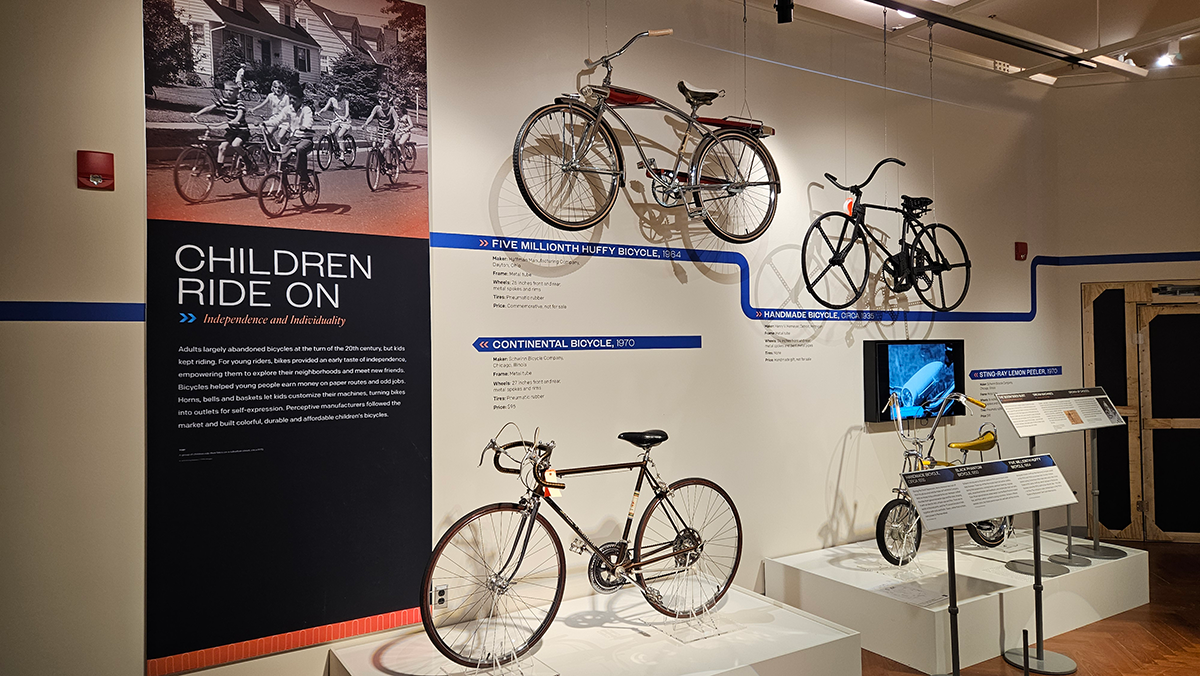
“Bicycles: Powering Possibilities” includes 17 machines representing 200 years of development. / Photo by Matt Anderson
The exhibit’s interactive experiences let visitors join in the fun. Handling different materials like wood, steel, and aluminum shows how a bike’s weight is affected by its very substance. Sprockets and chains illustrate the mechanical advantages of multiple gear ratios. Spokes with decorations and playing cards demonstrate how young riders have customized their bicycles for generations. Video displays feature bicycle scenes from favorite movies and television shows, while vintage newsreels showcase long-ago bicycle rides and races. Additionally, three point-of-view videos let visitors ride along over mountain trails in Utah, through Manhattan traffic to Times Square, and along Mackinac Island’s tranquil Main Street.
Bicycles: Powering Possibilities is on view in Henry Ford Museum of American Innovation’s Collections Gallery from May 3, 2025, through February 15, 2026. Don’t miss the opportunity to see, study, and celebrate these mechanical marvels that have kept us moving for two centuries.
Matt Anderson is Curator of Transportation at The Henry Ford.

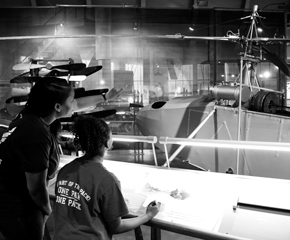
Facebook Comments